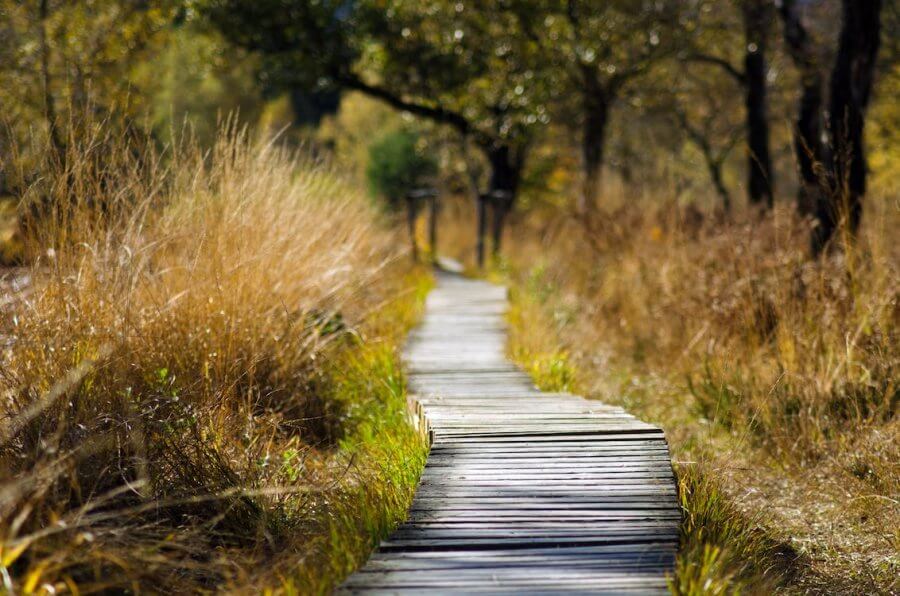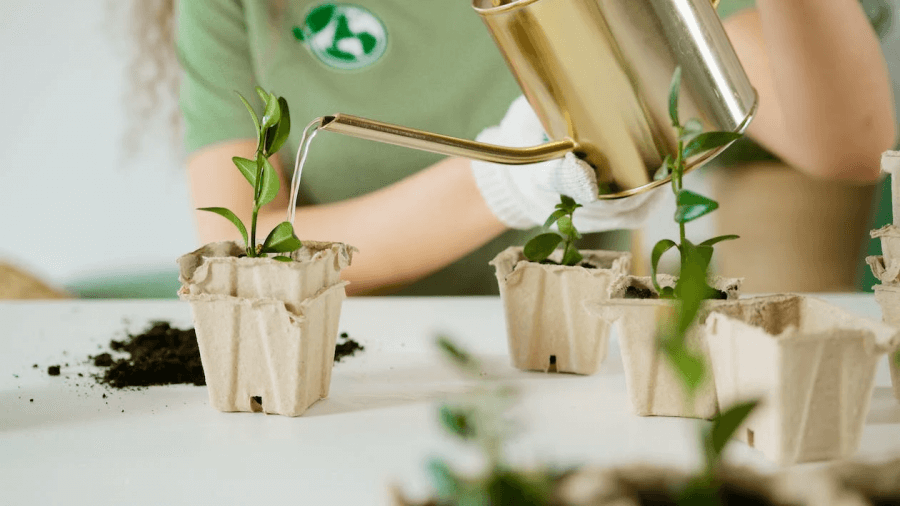There is a scientific theory known as the biophilia hypothesis that indicates a natural tendency for humans to seek a connection with nature. This tendency is connected to our evolutionary origins and the disconnect we experience in a technological world.
 Source: https://www.pexels.com/photo/wooden-bridge-in-shallow-photo-289327/
Source: https://www.pexels.com/photo/wooden-bridge-in-shallow-photo-289327/
Several studies have shown that time spent with nature can reduce stress and anxiety. The Japanese engage in an activity called shinrin-yoku or “forest bathing” to get the full effects of this connection.
Spending more time with nature can help you feel happier and more content. Here are nine ways to incorporate more nature into your daily life.
Display Fresh or Dried Flowers
One of the easiest ways to bring nature into your home is with flowers. Displaying fresh or dried flowers will add a pop of color, an uplifting fragrance, and a subtle change of scenery to your home. This is also an excuse to buy your partner or yourself some flowers as a just because gift.
Invest in a flower subscription from a florist who uses local blooms and sustainable harvesting methods. Alternatively, you can grow your own flowers to cut and dry or take cuttings from friends’ gardens (with permission, of course). Save your favorite bouquets by drying and preserving them yourself. You can also use fragrant dried petals to make potpourri.
Create an Indoor Garden
Creating an indoor garden is a fun alternative to displaying cut flowers. If you’re a plant-lover, caring for an indoor gardenis an uplifting hobby that will feed your soul.
If you’re new to plant care or struggle to keep plants alive, start with some low-maintenance, resilient options. Some of the best beginner-friendly plants include:
- ZZ plants
- Snake plants
- Spider plants
- Dracaenas
- Ivy
- Bamboo
Pay attention to the light and watering needs when placing your indoor garden. As you build knowledge and confidence, you can start to add more complicated plants.
Don’t hesitate to incorporate useful plants into your indoor garden. Grow an array of fresh herbs or simple vegetables to help you protect nature by offsetting your consumption.
Make Time to Walk
The key to spending more time in nature is to make it an intention. Everyone has time to step outside for a few minutes each day. Start a daily habit of walking— ideally in an area with trees and plant life. Begin your habit with a 5-10 minute walk and expand as your habit becomes established.
If walking doesn’t appeal to you or the weather isn’t favorable, try to spend a few minutes outside anyway. Seek a covered area in the rain to drink your coffee and listen to the sound of the water. Bundle up and take a few deep breaths of the cold, winter air. Every moment spent interacting with nature counts.
Embrace Outdoor Hobbies
Exploring new hobbies and finding new passions is a great way to get more time in nature. There’s also a seasonal element to this strategy. If you’re someone who hates the winter, finding outdoor winter hobbies can make it feel less burdensome.
Some great outdoor hobbies to consider include:
- Hiking
- Geocaching
- Camping
- Surfing
- Beachcombing
- Stargazing (astronomy)
- Nature photography
- Snorkeling or diving
- Skiing or snowboarding
- Snowshoeing
- Canoeing or kayaking
- Birdwatching
- Ice climbing
Outdoor hobbies don’t have to be high-impact or technical. There’s something for everyone regardless of age, ability, or interest.
 Source: https://www.pexels.com/photo/person-watering-the-plant-7048419/
Source: https://www.pexels.com/photo/person-watering-the-plant-7048419/
Listen to Nature Soundscapes
Technology is a great way to gain more access to nature. You can always go online and watch nature documentaries or check the webcams at nature reserves and national parks. However, these approaches can still feel disconnected.
Alternatively, you can immerse yourself in nature by listening to soundscapes. Turn your room into a nighttime jungle when you sleep or put on your headphones and listen to the sounds of a lakeside retreat as you work. Listening to these sounds will help you feel relaxed, focused, and at one with nature.
Support Conservation Initiatives
You can still feel connected to nature when you’re inside and engaged in other tasks. By supporting conservation initiatives, you contribute to protecting the natural world and all living creatures who call it home— yourself included!
Take some time to research local conservation initiatives to support nature in your area and other points of interest. For example, if polar bears are your favorite animal, supporting Polar Bears International is a lovely gesture, even if you live thousands of miles away.
Conservation donations also make a great holiday gift. Consider donating money in your friend’s and family’s names to pay it forward and share the connection with nature.
Explore Local Green Spaces
Become a tourist in your own town and make time to explore local green spaces. Try to head to a local park or trail at least once per week. Make an event of it, packing coffee or a picnic to pass the time.
Exploring local green spaces also provides an opportunity for cost-saving hobbies. A shared coffee in the local park is more intimate and personal than spending time in a packed cafe. Packing some toys and heading to a local beach or playground will keep the kids busy and get everyone back to nature.
Create a Backyard or Balcony Oasis
People who live in an urban environment often struggle to connect with nature. Accessing green space can be challenging with a busy schedule, and space may be limited for an indoor garden.
If you have a balcony or a small backyard, you can transform it into a private oasis with natural elements. Create a small pollinator garden using potted plants to attract butterflies and bees. Add some atmospheric lighting, vining plants, and a small fountain to create a private paradise where you can enjoy nature.
Invest in Zero-Waste Products
Investing in zero-waste products is a passive way to reconnect with nature. Being intentional in your purchases and prioritizing brands and products that protect nature will help you build awareness and engagement with the natural world.
One caveat for this effort: don’t get rid of perfectly good items to replace them with an eco-friendly alternative. Throwing your mint-condition plastic phone case in a landfill to buy a biodegradable one helps nothing. Similarly, buying new products rather than visiting a thrift store or the online marketplace is another example of greenwashing
Start by replacing cleaning products and chemicals with natural alternatives and eliminating single-use plastics. As products naturally reach the end of their lifespan, replace them with something eco-friendly.
Reconnecting with nature is easier than you think. Try these helpful tips to incorporate nature into your daily life.


